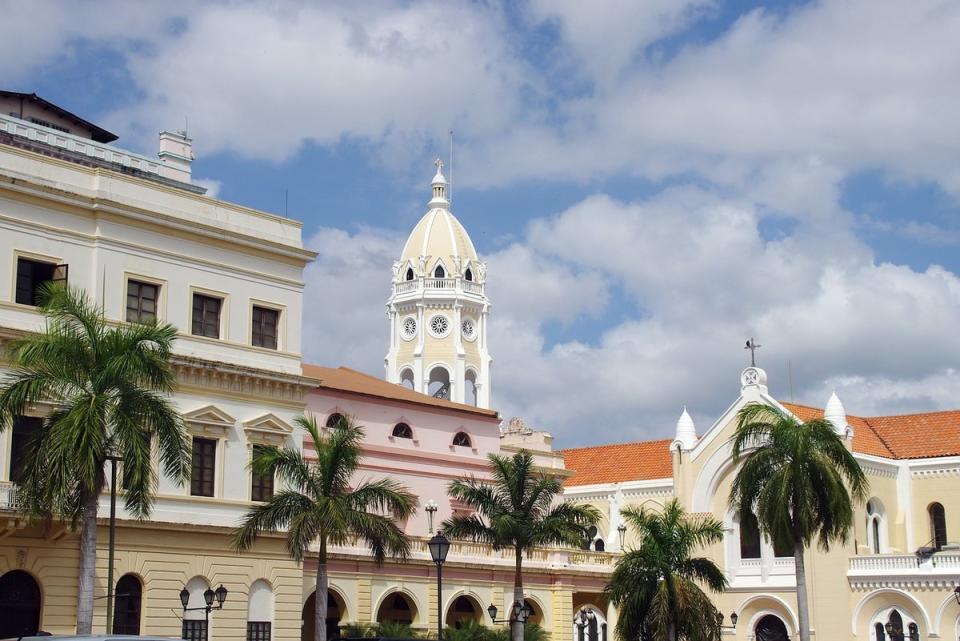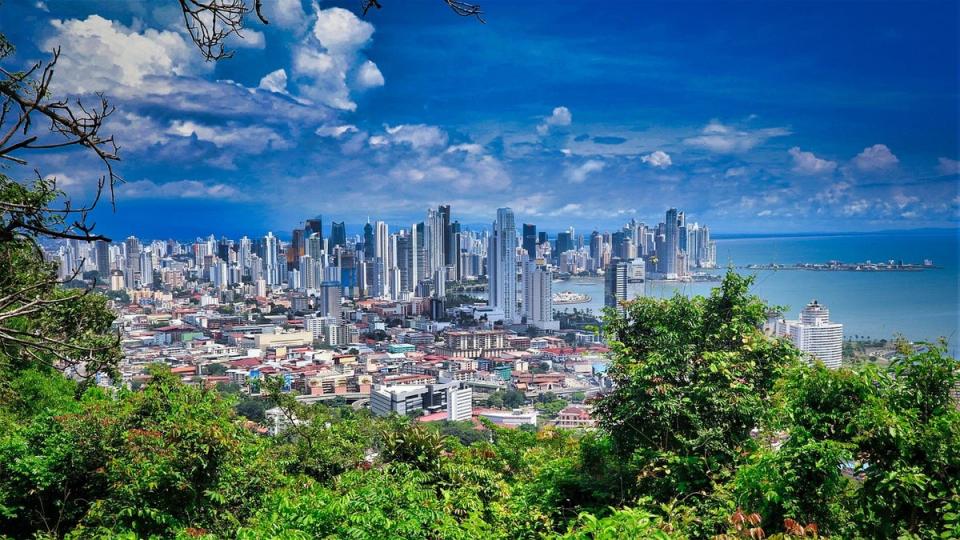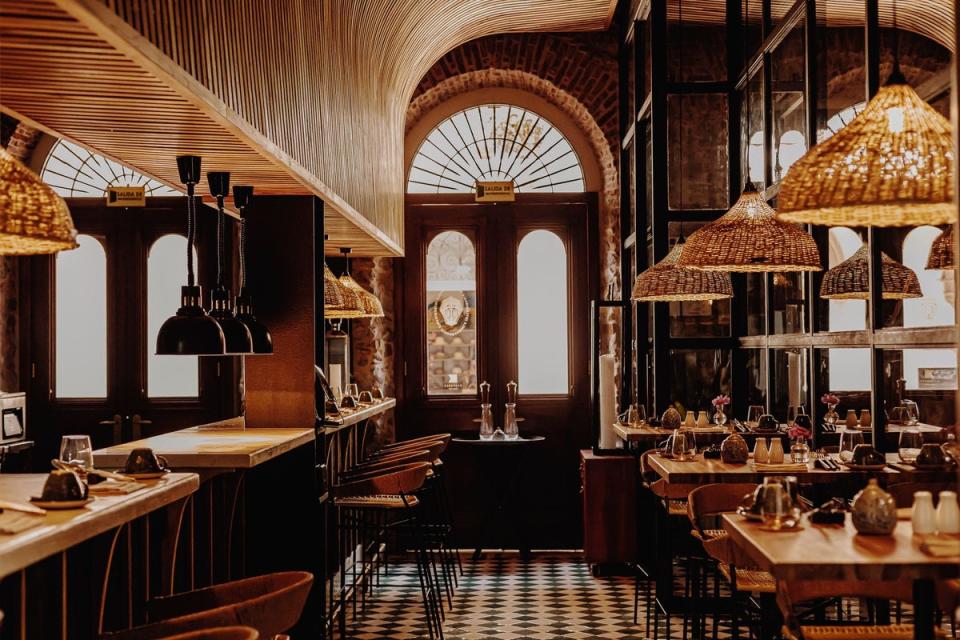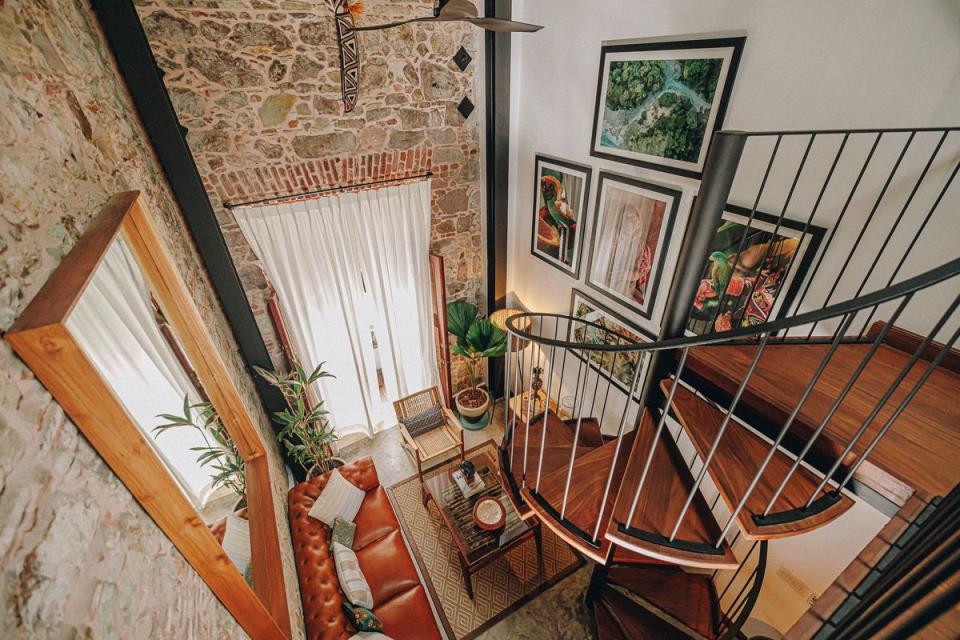Panama City's Casco Viejo: what to see, eat, drink and do

Coffee, rum and sunny blue skies: the tiny tropical country of Panama has it all.
And while most people that come to Panama come pass over Panama City in favour of the tropical San Blas islands, there’s still plenty of reasons to make a stop here. Top of the list is the bustling Casco Viejo. Home to countless churches and antique buildings dating back to Spanish rule, it’s a World Heritage Site that has undergone a rapid transformation in recent years.
From a derelict space, it’s become one of the capital’s trendiest areas, stuffed to bursting with chic hotels and some of the best eating in the capital. Given that it’s still somewhat of a hidden gem, now’s the perfect time to pay this slice of the world a visit: here’s what to see, do, and most importantly, eat.
What to see

As one of the oldest parts of the city, the best way to see Casco Viejo is simply by taking a stroll through its winding streets and soaking in the atmosphere.
Let your feet take you towards the gorgeous old Basilica, which was built in 1674 and remains one of the city’s oldest buildings – then turn towards the town’s easternmost point, the Plaza de Francia, which features a massive memorial to the workers who built the Panama Canal, but more importantly, excellent views of the surrounding city from the bastion’s walls (which makes it perfect for sunset strolls).
From there, drop in on Casco Viejo’s many churches, including San José, which is famous for its golden altar; San Francisco of Asís in the Plaza Bolívar and La Merced.
Still have time after that? Then a trip to the Mercado de Mariscos, Panama City’s seafood market, is a must. Located on the edge of the old city, it’s worth visiting for the seafood vendors lining its edges, who will sell you cups of ceviche for $2 – which might end up being the best you have all holiday.
More of a history buff? Good news, there’s entertainment in the form of the extremely informative Panama Canal Museum. Recently renovated, it contains staggeringly detailed exhibitions on the history of the city and the infamous canal, which can be spotted from some of the area’s highest buildings (tickets cost £13 each, museodelcanal.com).
While you’re wandering the streets, don’t forget to keep your eyes peeled for Panama’s true passion: coffee. This is the home of the good stuff, and there are coffee shops on almost every corner offering both Italian-style coffee and ‘pour-overs’ – essentially, fancy filter coffee.
Though you can’t go far wrong, for a truly highbrow tasting experience we’d recommend heading to Sisu, which brings a slice of California cool to the humid streets of Casco Viejo.

Run by Lamastus Family Estates, a longtime coffee grower, it’s the perfect place to settle back and try a geisha coffee: a rare blend unique to Panama which has a delicate, floral taste (more information here).
Or is rum more your speed? Head to Pedro Mandinga, which is one of the only rum distilleries in Panama City. Happily, it also operates a bar in Casco Viejo, so settle back in the gorgeously decorated interior (wooden panelling, floral wallpaper and leather armchairs) and try a rum flight of Panamanian rums for $20, or £18 (pedromandinga.com).
And for those wanting to venture a little further afield, there’s the rest of Panama City to explore too. Though it isn’t all that touristy, it’s still worth paying the £5 Uber fare to visit the Metropolitan National Park, which is a 15 minute walk away but lets you dive into the rainforest lurking on the fringes of the city. Even better, it’s teeming with wildlife: we saw sloths, but toucans and monkeys can also be spotted (tickets cost £3.50pp, parquemetropolitano.org). Hike to the top for gorgeous views of the entire skyline.
Where to eat
For truly top-notch eating, the first place on the list has to be Fonda Lo Que Hay. Founded in 2020, the restaurant has gone onto build itself a reputation as one of Panama’s best dining spots – in fact, it’s made the list for 50 Best Restaurants in Latin America.
Head here for fun, quirky takes on traditional Panamanian dishes: the toasted cassava with tuna melts in the mouth (and is a house special), while the Sexy Clams (clams in a melting green sauce, served with coconut rice) is also sublime. And don’t forget to wash it all down with a cocktail, ideally the Paloma (meals cost around £150 for two, fondaloquehay.com)
Next up, there’s Kaandela at Amarla. Recently opened, it offers some of the most exciting dining in the area, incorporating fire and smoke into many of its dishes (some, like the smoky chocolate cake, with unexpected and delicious results). Take a seat at the open counter and watch the chefs work their magic with twists on old classics: the ceviche with passionfruit sauce and a Panamanian take on paella are especial highlights. Or, if you’re feeling brave, opt for the tasting menu and let them decide (meals cost £150 for two, kaandela.com).

For those looking for a more low-key dinner (or indeed drinks), La Pulperia is a good bet. As the name infers, it serves octopus, but alongside a menu that foregrounds local food like ceviche and empanadas. However, don’t miss out on the truly staggering cocktail list that ranges from mojitos to ones riffing on the classic Panamanian pudding of shaved ice (meals cost around £70 for two, lapulperia.pa).
Or if your tastes stretch towards the exotic, then how about Enkai? Tucked away in a little back street, it serves Peruvian/ Japanese fusion that has to be tasted to be believed. Yes, there’s the extensive list of ceviche, but there’s also a tender tuna tartare and grilled fish in passionfruit sauce that’s definitely worth experimenting with (meals cost around £100 for two, enkainikkei.com).
Where to stay
For a place that combines luxury with intimacy, Amarla Casco Viejo has to be the place to go. A tiny (it only has seven rooms) boutique hotel tucked away in the old town’s streets, it’s a gorgeous renovation of an old Spanish townhouse (which dates back to the 17th century) that makes it the perfect bolthole from a long day of exploring.
While all the rooms are lovely, we’d recommend splashing out on the suite: set across two levels, it’s decorated with photographs of local wildlife (which can be bought) as well as Panamanian art, and comes stocked with silk robes in which to lounge around artfully as you sip your morning coffee. There’s a roof terrace with a plunge pool and sun loungers to relax on, and the inside is a study in plants and wood. And did we mention it’s home to one of the city’s best restaurants, in Kaandela? All the more reason to visit (rooms start from £192, amarla.pa).

Amarla fully booked (as it often is)? Then why not pop into The American Trade Hotel. Located in a 1917 building that started as an American trade building, it’s been beautifully redesigned and now boasts a jazz club, several restaurants and immaculately turned out rooms (rooms start from £224, americantradehotel.com).
Then there’s Hotel La Compañía. Located down the road in an old Jesuit monastery that dates back to the 1700s, it’s now a bustling hotel that has two on-site restaurants (one for Continental food, one for Spanish-influenced dishes) and a sunset-worthy rooftop bar in the form of Capella (rooms start from £280, hyatt.com) .
When to visit
Though Panama is warm all year round, the January to April season has blue skies, slightly less sweltering heat and a smaller chance of rain (which when it comes, comes in buckets). Though prices are higher, we’d recommend travelling then.
How to get there
Flights to Panama City often require heading through an intermediary city: you can fly via Paris with Air France or via Amsterdam with KLM.


